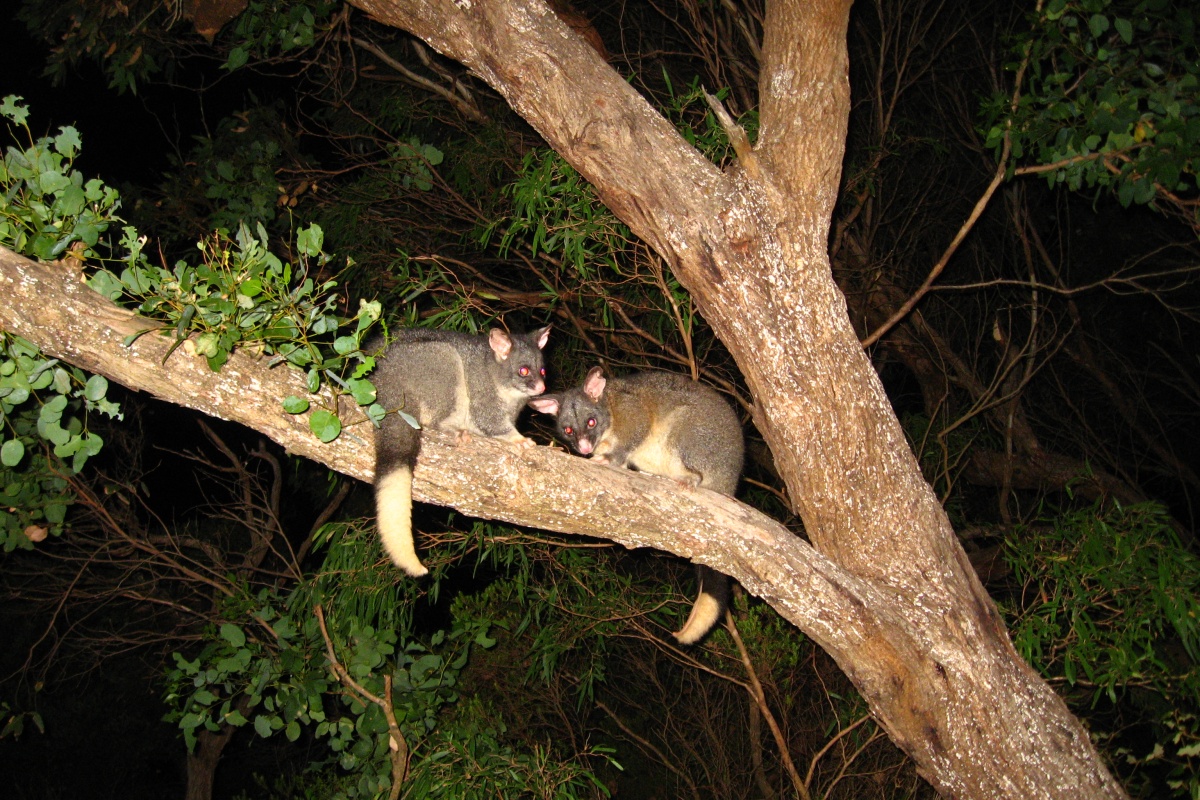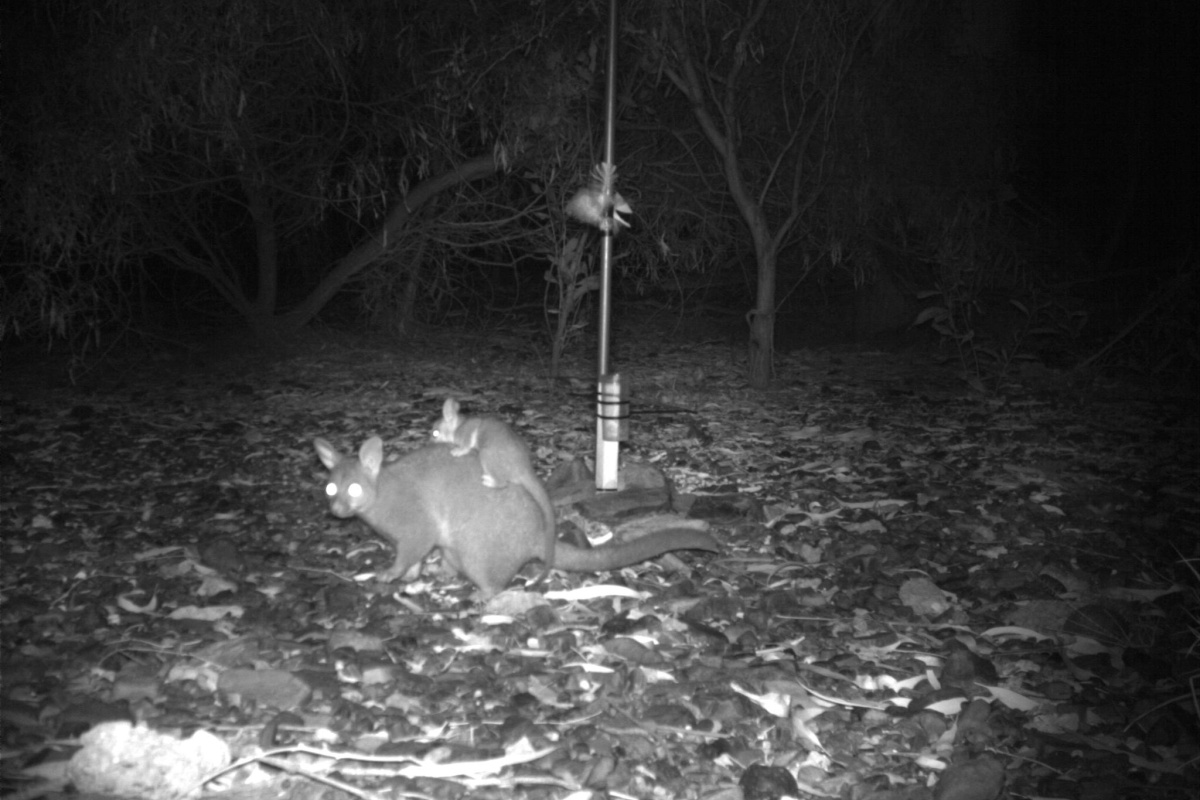The common brushtail possum is a native marsupial that many Australians love to hate. Their remarkable adaptability to urban environments has led to the species being perceived as a pest due to their willingness to take shelter in roof spaces, and their love of devouring fruit and flowers in cultivated gardens. But it is this ability to coexist with humans in urban areas that has potentially saved the species from local extinction in Australia’s cities, where many other native marsupials have now disappeared. The same cannot be said for brushtail possum populations in other parts of Australia where the species is no longer common, and potentially locally extinct.
Once one of Australia’s most widely distributed marsupial species, the common brushtail possum has undergone serious declines in the arid parts of their range. Though many arid regions lack the forest and woodland habitats that we know brushtail possums love, such as the koomal (Trichosurus vulpecula hypoleucus) in south-west WA, the species is quite at home in the absence of trees.
One example is the thriving population on Barrow Island off the Pilbara coast in WA, where brushtail possums live in caves and boodie (burrowing bettong, Bettongia leseuer) warrens rather than tree hollows. The same appears to be true in the Nullarbor where subfossil material suggests brushtail possums were denning in caves until fairly recently. In central Australia, the species was known from riverine habitats associated with rocky ranges but is now thought to be locally extinct.
Describing Species
Because of the abundance of brushtail possums in Australia at the time of European settlement, many specimens were taken by early collectors and shipped to taxonomists at museums in the northern hemisphere. These taxonomists considered the variation they observed in pelt colour and size to be enough evidence to describe a multitude of different species and subspecies – 22 in fact. Today, one species and six subspecies are generally recognised, and in WA that includes the koomal and the northern brushtail possum (T. v. arnhemensis), the latter is a listed threatened subspecies.
Brushtail possums are one of many species that has been translocated to different locations throughout Australia in efforts to restore native mammal diversity and ecosystem function, particularly in havened reserves and sanctuaries (behind predator-proof fences). Taxonomic and genetic distinctiveness, as well as local adaptation, need to be considered in translocation proposals as moving animals to areas they are not adapted to, or mixing populations that are very distantly related could be problematic for translocation success.
Studying tissue samples
We wanted to better understand the genetic relationships between brushtail possum populations throughout Australia, and for the first time included tissue samples taken from possums in the mid-west, Pilbara mainland and Broome in WA. Some of these samples were collected by Department of Biodiversity, Conservation and Attractions (DBCA) staff and others were donated by members of the public who found roadkill possums or animals that had been injured and taken to wildlife carers. Previous genetic research showed that brushtail possums on Barrow Island were more closely related to the koomal in the south-west than the northern brushtail possum, and we set to test that with more samples.
What we found was quite surprising. Like the Barrow Island population, brushtail possums from Broome were more closely related to the koomal than they were to the northern brushtail possum, despite occurring geographically closer to the northern brushtail possum, with our closest sample of that subspecies being at Mitchell River National Park in the Kimberley. Brushtail possums from Chapman Valley near Geraldton and Robe River in the Pilbara were actually more closely related to populations in eastern Australia and South Australia, what is currently known as T. vulpecula vulpecula and are likely a western component of the now locally extinct populations from central Australia.
This means that WA is home to not two, but three subspecies of brushtail possum; the koomal (T. v. hypoleucus) in south-west WA, Barrow Island and Broome, the common brushtail possum (T. v. vulpecula) in the Midwest and Pilbara mainland, and the northern brushtail possum in the Kimberley (T. v. arnhemensis). Although the word ‘common’ does not seem fitting for populations of T. v. vulpecula in WA, which have also undergone serious declines in central WA.
Our research has shed light on the genetic relationships between brushtail possum populations, but more work needs to be done. We obtained a relatively small number of samples from very isolated populations throughout the State and more samples are needed to fill the gaps, especially in the Pilbara and Kimberley, to better understand the current limits of each subspecies distribution.
CASE STUDY: THE BRUSHTAIL POSSUM IN THE PILBARA
Brushtail possums were once more widespread and common in the Pilbara but now are rare and elusive in the region. Changes in habitat quality and the presence of introduced predators are thought to have contributed to their decline. A team of researchers, including DBCA staff, searched through the published and grey literature for every single brushtail possum record from the Pilbara to map their distribution in the region and chart their decline. By looking through biodiversity data and camera trap images, the team found 35 brushtail possum records since 2000, indicating that the species still persists in the Pilbara, but in very low numbers.
Possums are difficult to detect in the Pilbara. During a feral cat control program run by DBCA, only 13 possum detections were recorded in 15,120 camera trap nights. Interestingly, these detections were in the feral cat baited area. It is too low a number to draw any conclusions, but brushtail possums may be moving less due to fear of predation by feral cats and thereby are more difficult to detect. This work shows that camera traps can be a useful tool to detect brushtail possums in arid regions, provided there is a good understanding of the species habitat requirements and behaviour for them to be detected.




